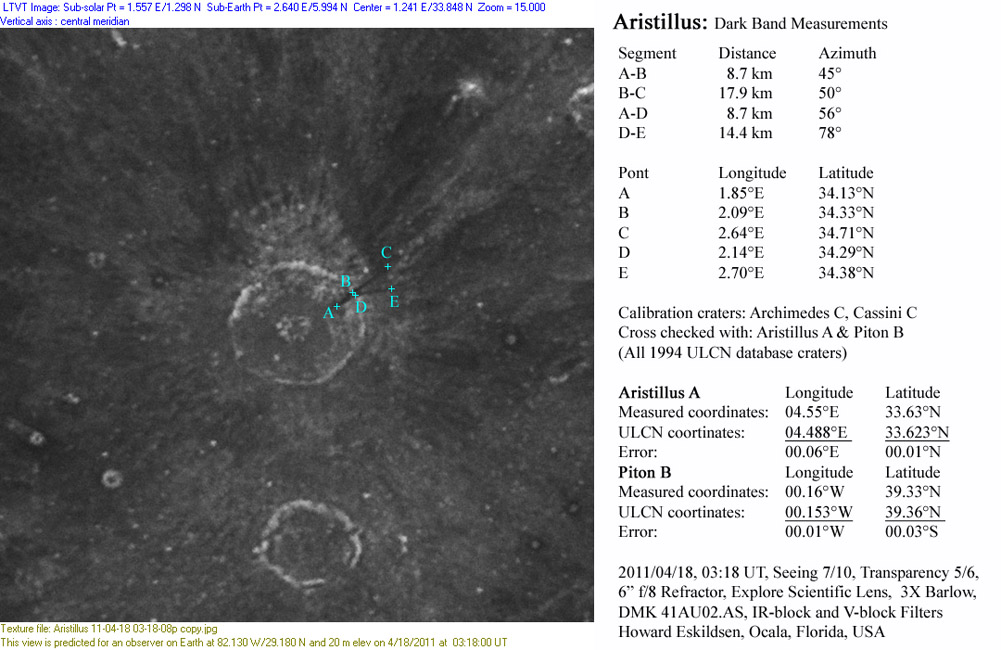Difference between revisions of "June 28, 2011"
| Line 1: | Line 1: | ||
__NOTOC__ | __NOTOC__ | ||
=Black Rock Bands= | =Black Rock Bands= | ||
| − | |||
<!-- ws:start:WikiTextHeadingRule:0:<h1> --> | <!-- ws:start:WikiTextHeadingRule:0:<h1> --> | ||
<!-- ws:start:WikiTextLocalImageRule:6:<img src="/file/view/LPOD-Jun28-11.jpg/239048785/LPOD-Jun28-11.jpg" alt="" title="" /> -->[[File:LPOD-Jun28-11.jpg|LPOD-Jun28-11.jpg]]<!-- ws:end:WikiTextLocalImageRule:6 --><br /> | <!-- ws:start:WikiTextLocalImageRule:6:<img src="/file/view/LPOD-Jun28-11.jpg/239048785/LPOD-Jun28-11.jpg" alt="" title="" /> -->[[File:LPOD-Jun28-11.jpg|LPOD-Jun28-11.jpg]]<!-- ws:end:WikiTextLocalImageRule:6 --><br /> | ||
| − | <em>image by [mailto:howardeskildsen@msn.com Howard Eskildsen]</em><br /> | + | <em>image by [mailto:howardeskildsen@msn.com" rel="nofollow Howard Eskildsen]</em><br /> |
<br /> | <br /> | ||
<em>Howard continues to use [http://ltvt.wikispaces.com/LTVT LTVT] to investigate the Moon by making measurements on his own images. Here is his most recent analysis:</em><br /> | <em>Howard continues to use [http://ltvt.wikispaces.com/LTVT LTVT] to investigate the Moon by making measurements on his own images. Here is his most recent analysis:</em><br /> | ||
| Line 10: | Line 9: | ||
Two dark bands arise from the base of the northeastern wall of Aristillus, cross the crater rim and diverge before blending into the background between 14 and 18 km from the rim crest. These bands must have been one of the last features deposited since they are so clear, distinct and overly other portions of the crater. The low albedo suggests that the bands consist of mare-like material, perhaps ejected from a deeper portion of the crater and streamed outward and upward beyond the rim, but not beyond the continuous ejecta blanket. Other possibilities might include pyroclastics or impact melt remnants, but these seem highly unlikely considering the almost linear pattern and absence of other associated markings.<br /> | Two dark bands arise from the base of the northeastern wall of Aristillus, cross the crater rim and diverge before blending into the background between 14 and 18 km from the rim crest. These bands must have been one of the last features deposited since they are so clear, distinct and overly other portions of the crater. The low albedo suggests that the bands consist of mare-like material, perhaps ejected from a deeper portion of the crater and streamed outward and upward beyond the rim, but not beyond the continuous ejecta blanket. Other possibilities might include pyroclastics or impact melt remnants, but these seem highly unlikely considering the almost linear pattern and absence of other associated markings.<br /> | ||
<br /> | <br /> | ||
| − | <em>[mailto:howardeskildsen@msn.com Howard Eskildsen]</em><br /> | + | <em>[mailto:howardeskildsen@msn.com" rel="nofollow Howard Eskildsen]</em><br /> |
<br /> | <br /> | ||
<strong>Related Links</strong><br /> | <strong>Related Links</strong><br /> | ||
Rükl plate [http://the-moon.wikispaces.com/R%C3%BCkl+12 12]<br /> | Rükl plate [http://the-moon.wikispaces.com/R%C3%BCkl+12 12]<br /> | ||
| − | More about the [http://www.lpod.org/?m=20060425 bands]<br /> | + | More about the [http://www.lpod.org/?m=20060425" rel="nofollow bands]<br /> |
<br /> | <br /> | ||
<hr /> | <hr /> | ||
Revision as of 21:18, 4 January 2015
Black Rock Bands

image by " rel="nofollow Howard Eskildsen
Howard continues to use LTVT to investigate the Moon by making measurements on his own images. Here is his most recent analysis:
Two dark bands arise from the base of the northeastern wall of Aristillus, cross the crater rim and diverge before blending into the background between 14 and 18 km from the rim crest. These bands must have been one of the last features deposited since they are so clear, distinct and overly other portions of the crater. The low albedo suggests that the bands consist of mare-like material, perhaps ejected from a deeper portion of the crater and streamed outward and upward beyond the rim, but not beyond the continuous ejecta blanket. Other possibilities might include pyroclastics or impact melt remnants, but these seem highly unlikely considering the almost linear pattern and absence of other associated markings.
" rel="nofollow Howard Eskildsen
Related Links
Rükl plate 12
More about the " rel="nofollow bands



